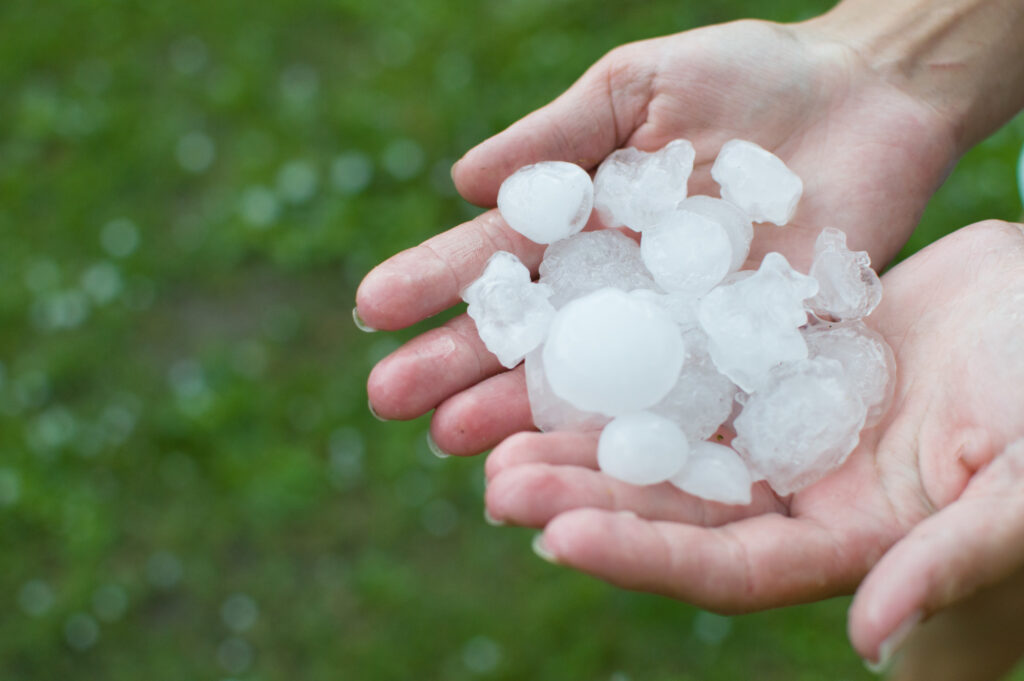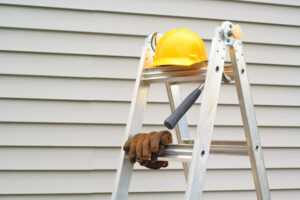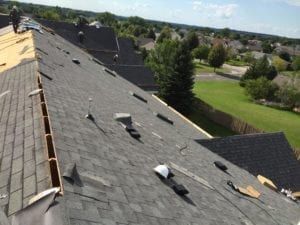Flat roofs are particularly susceptible to hail damage, presenting various signs that should not be overlooked. Key indicators include visible indentations and punctures, which compromise roof integrity and invite leaks. Look for tears or splits in the membrane, especially from hailstones larger than 1 inch. Exposed felt or loss of gravel on Built-Up Roofing systems can also increase vulnerability. Furthermore, damaged flashing may reveal dents or cracks, risking waterproofing. Regular inspections are essential for timely detection and repair. Knowing these signs can help protect your roof’s longevity and condition—discover further details on effective inspection methods and prevention strategies.
6 Key Signs of Hail Damage on Flat Roofs
Identifying key signs of hail damage on flat roofs is essential for maintaining structural integrity.
Look for visible indentations, punctures, and tears in the roofing membrane, as well as exposed felt or gravel loss in built-up systems.
Furthermore, damaged flashing and cracks in the coating can indicate compromised areas that may lead to further issues if not addressed promptly.
Indentations & Punctures
When a flat roof endures a hailstorm, the resultant indentations and punctures often serve as telltale signs of damage that should not be overlooked.
Indentations indicate hail impact, creating depressions that may compromise roof integrity. Punctures occur when hailstones penetrate the membrane, leading to potential leaks.
Regular inspections are essential to identify these issues early, preventing further structural damage.
Tears or Splits in Membrane
Tears or splits in the membrane of flat roofs often serve as critical indicators of hail damage, particularly following intense storms.
When hailstones exceed 1 inch in diameter, they can puncture or tear roofing materials, compromising structural integrity.
Regular inspections should focus on these tears or splits, as they can lead to significant roof hail damage and costly water infiltration if not addressed promptly.
Exposed Felt or Loss of Gravel (BUR Systems)
Exposed felt and loss of gravel on built-up roofing (BUR) systems are critical indicators of hail damage that demand immediate attention.
The underlying felt becomes vulnerable when gravel is stripped away, especially from hailstones 1 inch or larger. This exposure can lead to leaks and deterioration, necessitating thorough inspections to assess damage and determine required repairs to maintain the roof’s integrity.
Damaged Flashing
Following the identification of exposed felt and loss of gravel on built-up roofing systems, attention must also be directed toward the flashing, which plays an essential role in maintaining the roof’s waterproofing integrity.
Signs of hail damage may include damaged flashing exhibiting dents, cracks, or warping. These issues can create gaps, risking water infiltration and necessitating prompt inspection and repair to prevent costly leaks.
Cracks in Coating or Surfacing
One of the most critical indicators of hail damage on flat roofs is the presence of cracks in the coating or surfacing.
These visible fissures can compromise the roof’s integrity, potentially leading to water infiltration if not addressed promptly.
The severity of cracks often correlates with hail size, making regular inspections essential to document and assess the overall roof health and necessary repairs.
Water Pooling or Leaks
Water pooling on flat roofs serves as a critical indicator of potential hail damage that may have compromised the roof’s structural integrity.
This phenomenon can lead to significant water damage if left unaddressed.
To mitigate risks, it is essential to:
- Inspect your roof regularly, especially after storms
- Identify pooling areas promptly
- Address leaks to prevent further structural deterioration
Taking these steps can safeguard your property.
What to Do If You Suspect Hail Damage
If you suspect hail damage on your flat roof, begin with a safe inspection to identify visible signs such as dents or cracks.
It is essential to document any damage with photographs to support your findings.
Following this, contact a professional roofer for a thorough assessment to address both apparent and hidden issues effectively.
Conduct a Safe Inspection
Conducting a safe inspection of your flat roof is essential when hail damage is suspected, as it guarantees both your safety and the integrity of the roofing system.
To effectively conduct a roof inspection and identify hail damage, consider the following:
- Use a sturdy ladder and appropriate footwear for safety.
- Visually check for dents, cracks, or punctures.
- Look for granule loss in gutters.
Document the Damage
After a hailstorm, prompt documentation of any observed damage on your flat roof is essential for effective remediation and potential insurance claims.
Begin with a thorough visual inspection, capturing high-quality photographs of dents, cracks, and missing materials.
Furthermore, take note of secondary signs and maintain a detailed record of the storm date.
Consider a professional inspection to further document the damage if unsure of its extent.
Contact a Professional Roofer
Prompt action is essential when hail damage is suspected on a flat roof.
Contact a professional roofer immediately to assess the situation thoroughly.
- Document visible damage with photos.
- Schedule an inspection to uncover hidden issues using specialized tools.
- Make certain the contractor is certified to assist with insurance claims effectively.
Timely intervention can prevent further damage and costly repairs.
Need Help with Flat Roof Hail Damage? Contact Heins Contracting!
Experiencing hail damage on your flat roof can be an intimidating situation, but you don’t have to navigate it alone.
Heins Contracting is here to assist you with thorough inspections and repairs. Our skilled roofing contractors can identify signs of damage, such as granule loss and cracks, ensuring your roof’s integrity and longevity.
Contact us today to safeguard your investment.







